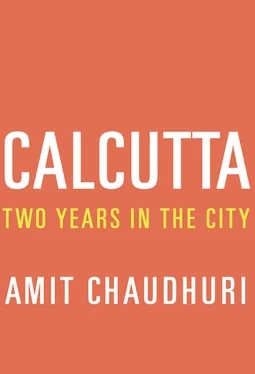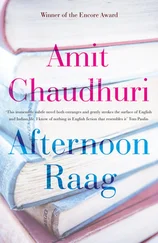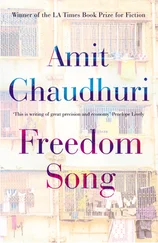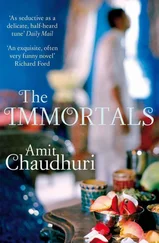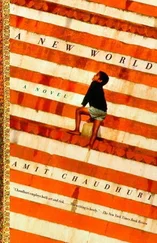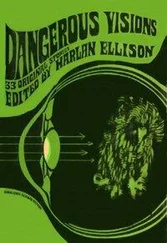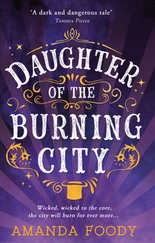What of Calcutta? It was that troubled and tragic time between 1968 and 1972 that he and Anitadi seemed to find most vivid. This was the period when the Naxalite revolution exploded, and then, in a few years, was brutally suppressed. “It was a fun time,” says Anitadi, with an odd, subversive excitement as I sip tea late into the evening; and it’s intriguing to hear those years, known mainly for their violence, invoked for their charm. But never before had the Mukherjees experienced the closeness and the thrill of danger — ideology breathed new life into their drawing room in Tivoli Park, and into the incipient adventure of their married life. Naxalite artists and filmmakers like Utpalendu Chakrabarty became interlopers during teatime. Samirda began to subscribe to and read the Naxalite journal Deshabratyi , and its English version, Liberation . Chaperoned and guided by the swanlike Anita, he saw his first Bengali play, Tiner Talowar ( The Tin Sword ), written by the great, vociferous Marxist playwright Utpal Dutta.
This mood — of cultural ferment and economic and social unrest — had been building up for years. It would, with its animosity to the oppressor, put an end to companies like Martin Burn and others. But it produced an incongruous gaiety. Utpal Basu tells me there was a “new Renaissance” then — by which he means a sort of efflorescence that rivals and parodies the famous Olympian Renaissance of the late nineteenth century, which produced Bankimchandra Chatterjee, Iswar Chandra Vidyasagar, Swami Vivekananda, the Tagore family, and many other mythic actors. Utpalda’s list of figures from his Renaissance in the sixties is provocatively wide-ranging: the filmmakers Satyajit Ray and Ritwik Ghatak, the sitar maestro Ravi Shankar, the football player Sailen Manna. To this must be added Utpalda himself, and his fellow poets, friends, and contemporaries who, like him, are associated with the journal Krittibas : the poets Sunil Ganguly (sober but epic), Shakti Chattopadhyay (perpetually drunk, often missing, quickly dead, and frequently worshipped), Sarat Mukherjee (famous for his first book of verse, Rimbaud, Verlaine evam nijaswa ), and the sly prose writer Sandipan Chatterjee. And, of course, there was the “Hungry Generation” group of poets of which Shakti Chattopadhyay was also a part, and with whom Utpalda hung out: he reminds me that the rubric “Hungry Generation” came from Keats’s passionate remonstrance to the nightingale: “Thou wast not born for death, immortal Bird!/No hungry generations tread thee down …” Indeed, the portrayal of humanity — and perhaps England — in Keats’s ode is not too far from the circumstances in which many young people found themselves in Bengal at the time, conditions that would eventually galvanise Naxalbari: “The weariness, the fever and the fret / Here, where men sit and hear each other groan: /… Where youth grows pale, and spectre-thin, and dies.”
My first remembered impressions of Calcutta are of that troubled, pulsating time. I would come to my uncle’s house in Pratapaditya Road for a month and a half during my summer vacations, and sometimes three weeks in the winter — and the volatile atmosphere, the hammer and sickle painted on walls, the home-made bombs being detonated in the distance (Pratapaditya Road was an area of disturbance), the refulgent Puja annuals that my cousins got as gifts, the adhunik songs on the radio, with their peculiar but characteristic melodic leaps, would be mixed up for me with the enchantment of the holidays, and with their melancholy, their inevitable coming-to-an-end. I didn’t want Calcutta —that Calcutta — to come to a close. Like Samirda and Anitadi, for whom the Naxal years are inextricable from the romance of their early married life, that period for me is inseparable from vacations and a sudden, infinite surplus of time. The Naxals were liberating Bengal from the bourgeoisie; Samirda, thrown out of his house by his mother, was liberating himself from Martin Burn and his own high bourgeois ancestry; and I was liberating myself from studies, discipline, knowledge, and my home in Bombay.
I pointed out earlier that Samirda and his wife like to listen to their guests at tea, to — and this is especially true of Samirda — throw them a question, draw them out, and then to quietly watch. But it’s clear from what I’ve written that Samirda must also tell, that he is a raconteur. Some of what he revealed I fleshed out and filled in later, but much of it — anecdote, reverie, throwaway observation — emerged over teatime.
Samirda has met a long procession of people during these teas, and many more before his sedentary style of existence began; behind his shield of politeness, of one who has nothing significant to offer, he’s studied them and their delivery closely. Now and then he’ll mimic somebody: become, for instance, one of the privileged, possibly dead, “duffers” in his family (“duffer” is an epithet he uses of his more benign Ingabanga relations), and, at another moment, assume the shrewd, narrow-eyed air of an East Bengali politician, letting loose a bangal snippet from the corner of his mouth.
Samirda knows that it’s not just what you say but how you say it that makes you intrinsically interesting. His mimic’s knack is evidence that he doesn’t view his invitees without amusement; that he isn’t entirely at their mercy. He annihilates himself while attending to them as they finish their éclair from Kookie Jar; then, at some point, he annihilates them by becoming them in a little spontaneous display before another set of guests.

Someone I know, also a well-to-do victim of polio and frequenter of the Bengal Club, but one who continues to walk with crutches with a staccato, oppositional ferocity, once told me that Samirda hadn’t tried hard enough; that he could have been more mobile if he had. I’m not qualified to judge this statement. But with Samirda I’ve felt that he saw movement as he did his place in history — metaphorically: as something which he didn’t wish to struggle to attain, and which he was content to let slip and go its own way while he quietly went his. For this reason, his drawing room was where everything happened for him.
Mrs. Mukherjee Senior was becoming more frail; by the end of the nineties, she couldn’t observe the teas in their entirety. At a certain point in the evening, she’d go inside. She’d also grown more hard of hearing; but her curiosity was strong. She might want to know what had suddenly caused excitement or laughter; then Samirda would interrupt the flow of things in a loud dignified voice, shouting at her patiently in his perfect English—“NO MA, WHAT AMIT SAID IS …” because, invariably, the assumption was she’d misunderstood. And she would look startled and chastened, and remind her son with a pained, Victorian firmness, “There’s no need to shout, baba, I was only asking …” (“Baba” was a term this family of three used of each other — in fact, of anyone in their company — to express affection. They made it particularly forgiving and emollient.) Once these exchanges were done, conversation was resumed.
Samirda once told me that his mother’s finances had run out when she’d been forced to sell the one hundred thousand shares—“a decent number, giving her decent dividends”—in Martin Burn in the eighties. He’d left the company in 1986, ten years after its future had been sealed by nationalisation, and as the new Calcutta under the Left became a location inimical to private enterprise; since then, he’d had no reliable, regular income, except the “measly,” ever-decreasing (in real terms) Rs 600 he got as a pension.
Читать дальше
